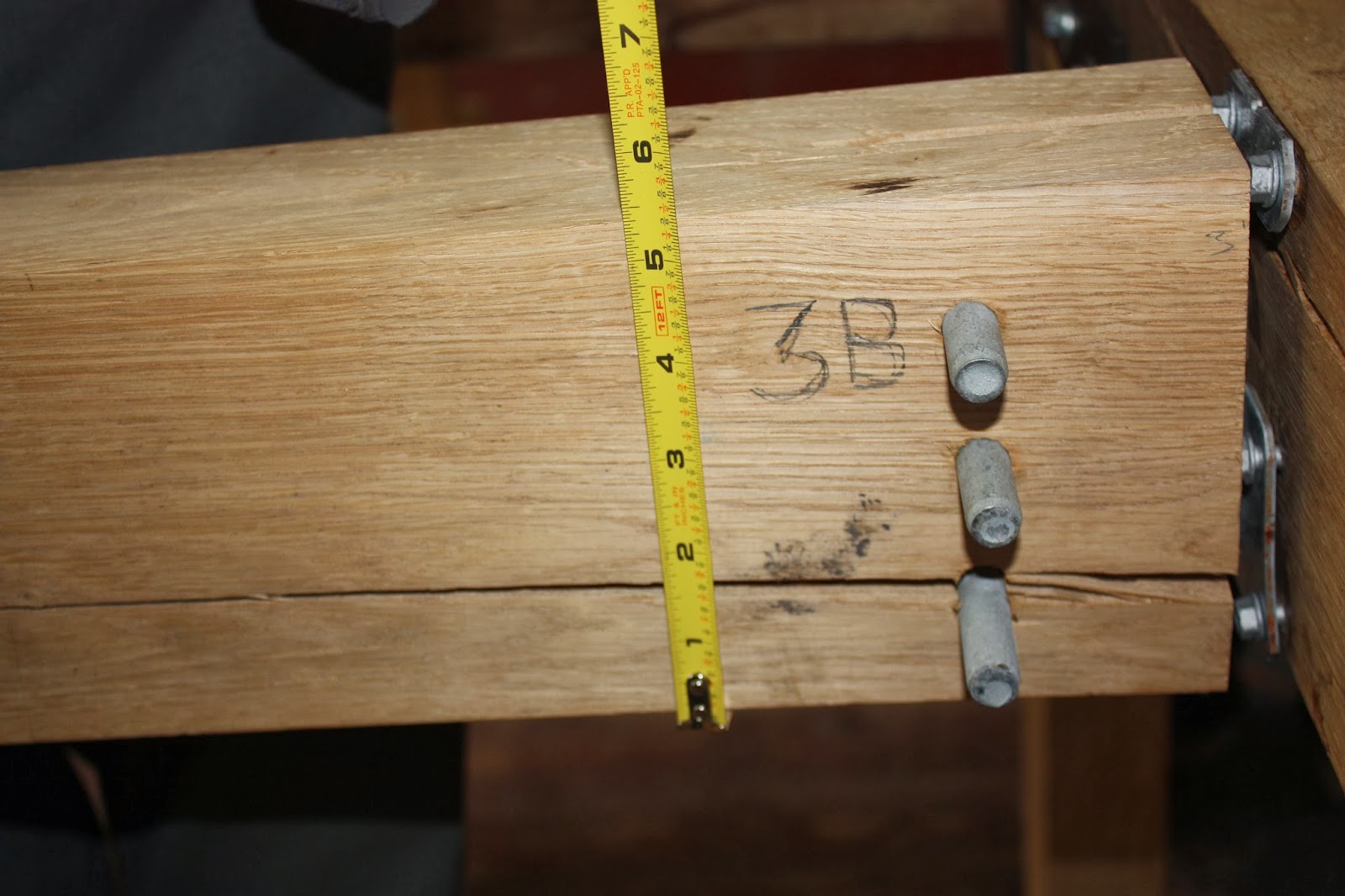The other type of connection we used for constructing the green oak frame utilized Simpson connection straps and bolts.
Fabrication: Preparing the green oak members for assembly was easier using a standard metal strap, such as Simpson Strong-Ties. Due to time limitations with the shipping of hardware, we chose to fabricate our own metal straps. This fabrication method can easily be accomplished with standard tools, such as circular saws and drills, because all oak members meet with a flush butt connection. It would be very possible to fabricate and assemble on site. The only problems we ran across in this process was the gumming up of drill bits due to the moisture content of the wood; we were however, still able to efficiently mill down the oak members and set in pilot holes using the metal straps as a template.
Construction: With all the oak members ready and labeled, the assembly of the frames was a simple and efficient process. The biggest hurdle we faced was the physical demand of working with such a heavy material. We discovered that the wood is much heavier when green than typical kiln dried or seasoned timbers. We were able to assemble the two bends of the frame on the ground, raise them up on the cart, and attach the connecting joists and ridge beam. The job definitely required multiple sets of hands in order to hold the frame upright and attach the final connections. Although it was a taxing experience, we were able to refine our method of assembly and envision how, through the use of bracing and cranes, a larger frame could be constructed on site. Prefabrication was also a viable option.
Post-observations: After the frame was kiln dried for a month it showed many signs of distortion; This proved to be problematic in combination with the metal strap connections. The radial and tangential shrinkage of the wood was significant. Dropping from 3" x 5.5" to approximately 2.75" x 5.25", the oak shrank up to a quarter of an inch. This led to the wood actually shrinking away from the screws causing the metal plates to pull away from the wood. These simple joint connections were pulled apart due to the shrinkage that caused the joists to move. We had to use a concealed joist tie that set into the center of the oak member. The massive metal dowels created weakness in the smaller sections of the oak member and created a large check along the entire side of the joist. Since we were forced to rapidly dry the frame as a simulation, we were not able to see how the frame would have performed if the connections were maintained and tightened throughout the drying process. We concluded that due to the way the screws reacted to the shrinkage of the wood, strap connections can work but are not optimal when working with green oak construction drying in a kiln.
 |
| You can see the gap between the plate and the wood |
 |
| The shrinkage was so drastic you could fit a pencil inside |
 |
| This check may have been due to the pins |
 |
| More shrinkage and movement |
 |
| You can see the bowing on the beam |
 |
| Checks down the side of the column |




























No comments:
Post a Comment